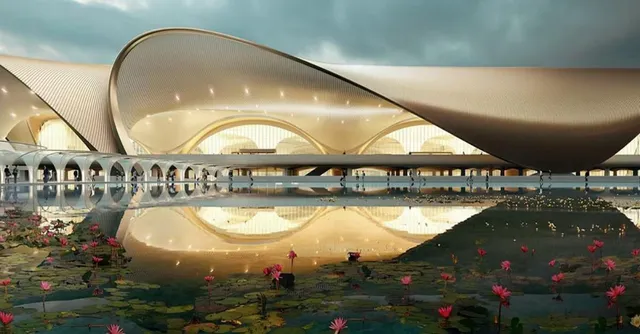- By Yashashvi Tak
- Sun, 05 Oct 2025 11:42 AM (IST)
- Source:JND
Navi Mumbai International Airport (NMIA) is set to open on October 8, 2025, with Prime Minister Narendra Modi inaugurating its first phase. Commercial flight operations from the greenfield facility will commence in December. The new airport will elevate Mumbai to the ranks of elite twin-airport cities such as London, New York, and Tokyo, significantly enhancing India’s standing in global aviation.
Navi Mumbai International Airport: Cost And Ownership
Built at a cost of Rs 19,647 crores, the Navi Mumbai International Airport (NMIA) is the second airport in the Mumbai Metropolitan Region, following the Chhatrapati Shivaji Maharaj International Airport. It received its aerodrome licence from the Directorate General of Civil Aviation (DGCA) on September 30.
ALSO READ: Vijay Rally Stampede: BJP Calls Karur Tragedy 'Planned, Created', Alleges CM Stalin In 'Mute Mode'
Spread across 1,160 hectares, NMIA is being developed through a public-private partnership, with Adani Airport Holdings holding a 74 percent stake and CIDCO 26 percent. Its lotus-inspired design seamlessly merges Indian heritage with cutting-edge sustainable engineering, establishing it as one of Asia’s most advanced airports.
Navi Mumbai International Airport: Capacity And Jobs
Phase 1 of Navi Mumbai International Airport (NMIA) will handle 20 million passengers annually with one runway and terminal. At full capacity, the airport will feature four terminals and two runways, increasing Mumbai's combined capacity with CSMIA to 155 million passengers per year. Cargo handling will expand from 0.5 million to 3.2 million tonnes annually through a fully automated, AI-enabled terminal.
The project is expected to generate over 2 lakh jobs across aviation, logistics, IT, hospitality, and real estate. Sustainability measures include renewable energy, rainwater harvesting, and passive cooling. The DGCA granted the aerodrome license on October 1, 2025.
Navi Mumbai International Airport: Features
Navi Mumbai International Airport will be the first in India to integrate expressways, highways, metro lines, suburban rail, and even water taxi connectivity. Designed as a green airport, it includes storage facilities for sustainable aviation fuel. In addition to its efficiency, the airport will feature an Automated Passenger People Mover system to seamlessly connect all four terminals internally.
India’s Aviation Sector
India’s aviation sector has grown rapidly, with operational airports rising from 74 in 2014 to 163 in 2025, targeting 400+ by 2047. Passenger traffic is projected to double to 500 million by 2030, and cargo volumes to triple to 10 million tonnes, positioning India as a global aviation hub. India was re-elected to the ICAO Council, reflecting its 81-year continuous presence and leadership in aviation safety, security, sustainability, and inclusive growth.
Under Prime Minister Narendra Modi, the Ministry of Civil Aviation has driven transformative growth through legislative reforms, infrastructure expansion, and focus on connectivity, safety, and sustainability, establishing India as a leading global aviation market.
(With ANI Inputs)

